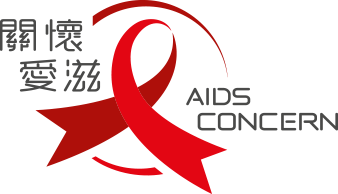綜合形式預防
《聯合國愛滋病規劃署》支持以綜合形式預防愛滋病病毒傳播。綜合形式預防指一系列預防愛滋病病毒感染的方法,當中包括但不限於正確持續使用安全套、定期愛滋病病毒測試、使用暴露前預防性投藥(PrEP)及暴露後預防性投藥(PEP)、感染者體內病毒數量達致不可檢測(Undetectable Viral Load)狀態以及伴侶安全協商(Negotiated Safety) 等。各種預防愛滋病病毒傳播措施可按不同社群需要綜合使用,以達致全面及有效的愛滋病病毒預防。
另外,香港愛滋病顧問局建議策略指出沒有單一的預防策略足以控制愛滋病疫情。因此關懷愛滋建議所有高風險社群人士採取至少兩項或以上的預防措施,才可以有效預防愛滋病病毒感染。
安全套是簡單使用預防愛滋病病毒傳播的用具,只要持續及正確地使用安全套將有效預防愛滋病病毒傳播。時至今日,安全套使用仍然是愛滋病預防措施中主要的用具1 。
愛滋病病毒測試是唯一有效的檢查了解個人的愛滋病病毒狀況。因此,關懷愛滋鼓勵曾經發生不安全性行為的人士於空窗期後儘快接受愛滋病病毒測試。性活躍人士每六個月便可接受一次愛滋病病毒測試2 。各非政府組織及政府均有提供愛滋病病毒測試以及自願輔導服務。另外,全球已有四套自我檢測(家用測試)配件獲全球醫療器材法規調和會的成員組織批准3 ,關懷愛滋亦為進行自我檢測人士提供輔導及跟進服務。
如果持續服用,暴露前預防性投藥能夠有效減低經性行為感染愛滋病病毒的風險。有鑒於投藥有效性的證據4 5 ,美國疾病控制與預防中心(CDC)以及世界衛生組織 (WHO)均視接暴露前預防性投藥為一種預防愛滋病感染的重要額外措施。
如想了解更多,請按暴露前預防性投藥
這兩種投藥能在減低愛滋病病毒疫情扮演重要角色。如果持續服用,暴露前預防性投藥能夠有效減低經性行為感染愛滋病病毒的風險。有鑒於投藥有效性的證據4 5 ,美國疾病控制與預防中心(CDC)以及世界衛生組織 (WHO)均視暴露前預防性投藥為一種預防愛滋病感染的重要額外措施。暴露後預防性投藥是一種抗愛滋病病毒藥物,在疑似接觸愛滋病病毒後 72 小時內服用,能有效減低感染風險達81% 6。
當愛滋病病毒感染者持續及正確地服用抗逆轉錄病毒療法(antiretroviral therapy),將有效地減少感染者血液內的病毒量,並將愛滋病病毒量達致不可檢測水平。這有效將傳播風險大大減低 7。根據PARTNER Study8研究顯示,達致不能檢測病毒量的愛滋病病毒感染者傳播愛滋病病毒機會接近零,故此盡早接受治療將有效管理身體狀況及預防病毒傳播。
伴侶安全協商要求伴侶之間需要持續溝通及測試。首先,伴侶間需要討論安全套使用的意願,了解雙方對於使用安全套的感受。其次,雙方均需要持續進行測試。假若決定不使用安全套發生性行為,則必須進行測試(空窗期內則需要持續使用安全套)以確定並沒有感染愛滋病病毒。
*以上措施只適用於愛滋病病毒預防,並不完全適用於其他性病的預防。
[1] Joint United Nations Programme on HIV/AIDS (2015). FAST-TRACKING COMBINATION PREVENTION. Available at: http://www.unaids.org/sites/default/files/media_asset/20151019_JC2766_Fast-tracking_combination_prevention.pdf
[2] Joint United Nations Programme on HIV/AIDS (2015). Combination HIV Prevention: Tailoring and Coordinating Biomedical, Behavioural and Structural Strategies 10 to Reduce New HIV Infections. Available at: http://www.unaids.org/sites/default/files/media_asset/JC2007_Combination_Prevention_paper_en_0.pdf
[3] Joint United Nations Programme on HIV/AIDS (2017). Public health and HIV viral load suppression. Available at: http://www.unaids.org/sites/default/files/media_asset/20170724_viral_load_suppression_brochure.pdf
[4] Dara A Lehman. (2015) Risk of drug resistance among persons acquiring HIV within a randomized trial of single-or-dual-agent pre-exposure prophylaxis. Journal of Infectious Disease, Vol 11, Issue 8, pp.1211-1218
[5] Anderson PL, Glidden DV, Liu A, et al. (2012) Emtricitabine-tenofovir concentrations and preexposure prophylaxis efficacy in men who have sex with men. Science Translational Medicine. Vol 4, Issue 151.
[6] Centres for Disease Control and Prevention. (Jan 2005). Antiretroviral Postexposure Prophylaxis after Sexual, Injection-Drug Use, or Other Nonoccupational Exposure to HIV in the United States: Recommendations from the U.S. Department of Health and Human Services. Available at: http://www.cdc.gov/mmwr/preview/mmwrhtml/rr5402a1.htm
[7] Rodger A. Association between sexual activity without condoms and risk of HIV transmission in serodifferent couples when the HIV-positive partner is using suppressive antiretroviral therapy: the PARTNER study. 21st International AIDS Conference, Durban, abstract TUAC0206, 2016.
[8] Rodger A et al. HIV transmission risk through condomless sex if HIV+ partner on suppressive ART: PARTNER study. 21st Conference on Retroviruses and Opportunistic Infections, Boston, abstract 153LB, 2014.
[9] ACON (2017). Know Your Risk | Ending HIV. Available at: https://endinghiv.org.au/nsw/stay-safe/risk-reduction-strategies/ .

